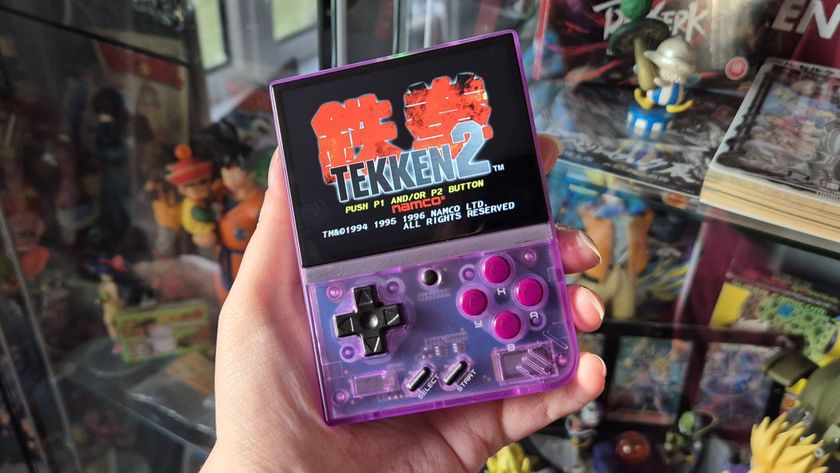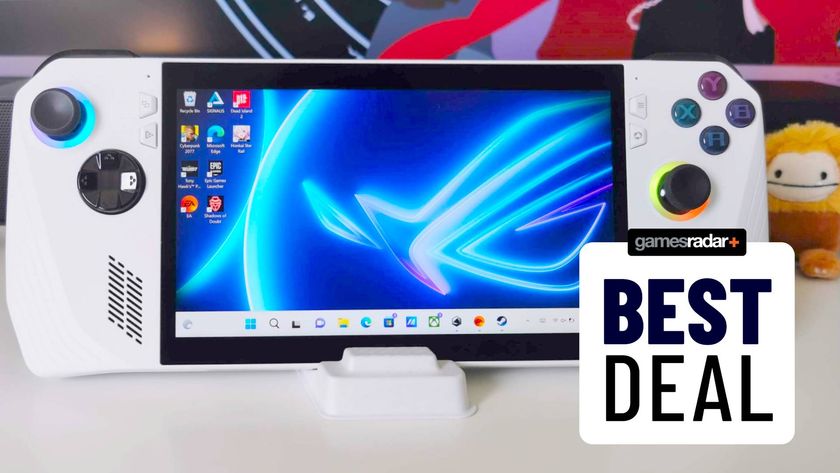How Valve's Steam Deck compares to Nintendo Switch, PS5, and Xbox Series X
What to expect from the Steam Deck
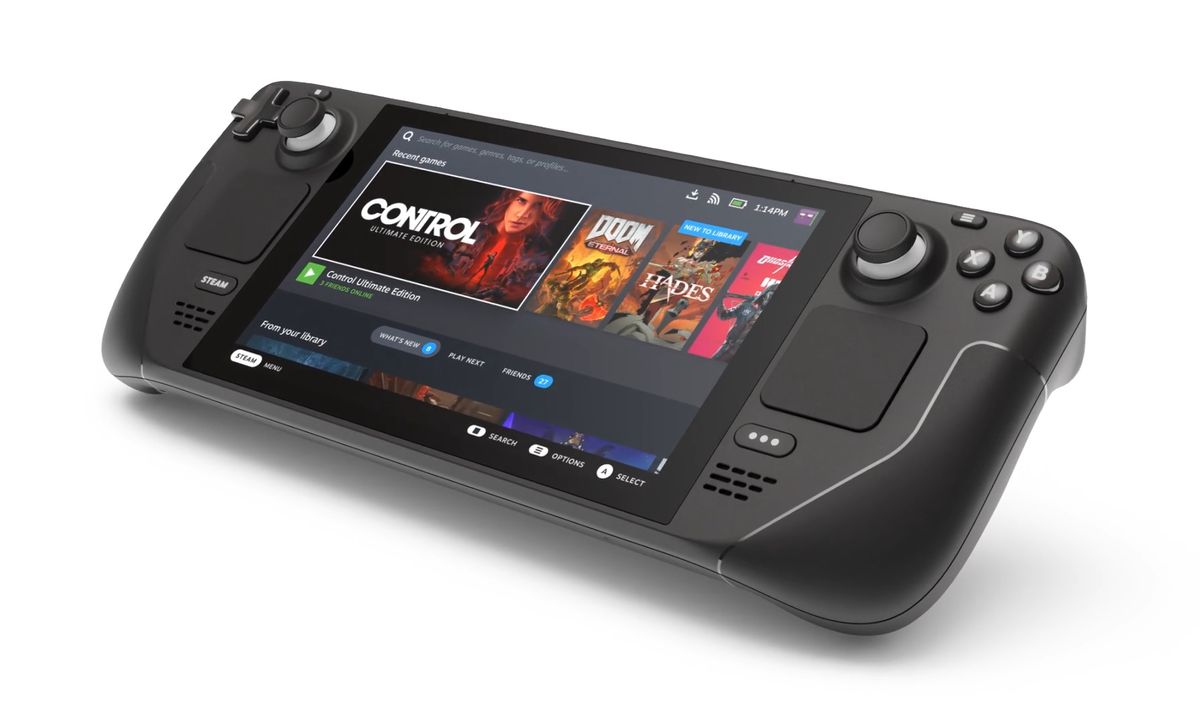
Valve's newly announced Steam Deck has instantly become one of the most intriguing bits of hardware on the market, but how does the portable, dock-enabled mini-PC compare to the latest consoles – PS5, Xbox Series X, and the competing Nintendo Switch handheld?
We'll start with the Nintendo Switch comparison because it puts several key things into perspective. Let's get one thing out of the way now: the hardware in the Steam Deck smokes the Switch. We'll get into that more in a moment, so for now just know that it's really not even close, and that that's very much by design. Valve wanted a gaming laptop you can hold like a big controller, and Nintendo wanted an affordable and flexible hybrid system. The Switch wasn't designed to play AAA games at 4K and that's reflected in its specs, even for the revised Nintendo Switch OLED model.
That said, the Switch is a very useful reference for what to expect from a handheld gaming experience – how it feels, how the screen looks, how long the battery lasts, and so on. Here's how the Steam Deck and Nintendo Switch stack up in those areas. We're using the base Switch for reference here because it's the most common one, but we'll note the few differences in the Switch OLED model as well.
Size
- Steam Deck - 11.7" long x 4.6" tall x 1.9" thick
- Switch - 9.5" long x 4" tall x 0.55" inches thick with Joy-Cons
Weight
- Steam Deck - 1.47 pounds
- Switch - 0.88 pounds with Joy-Cons (0.93 pounds for OLED model)
Screen
- Steam Deck - 7" 1280x800 60Hz LCD
- Switch - 6.2" 1280x720 60Hz LCD (7" 1280x720 OLED with the new model)
Audio
Sign up to the 12DOVE Newsletter
Weekly digests, tales from the communities you love, and more
- Steam Deck - 3.5mm stereo jack
- Switch - 3.5mm stereo jack
Storage
- Steam Deck - standard 64GB eMMC and up to 512GB NVMe SSD (with microSD slot for expansion)
- Switch - standard 32GB (standard 64GB in OLED model, both with microSD slot for expansion)
Battery life
- Steam Deck - 40WHr estimated 2 - 8 hours
- Switch - effective 2.5 - 7 hours (estimated 4.5 - 9 hours for OLED model)
Video output (docked)
- Steam Deck - up to 4K 120Hz / 8K 60Hz (live performance needs to be seen, as much stronger systems struggle to play games at these resolutions)
- Switch - 1080p
Dock ports
- Steam Deck - USB 2.0 and 3.1, HDMI, DisplayPort
- Switch - HDMI
Connectivity
- Steam Deck - 2.4GHz / 5GHz Wifi, Bluetooth 5.0
- Switch - 2.4GHz / 5GHz Wifi, Bluetooth 4.1
Gyro
- Steam Deck - gyro-enabled (IMU, capacitive thumbsticks, ambient light sensor)
- Switch - gyro-enabled (accelerometer, gyroscope, brightness sensor)
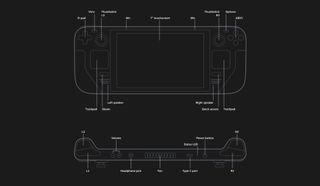
The Steam Deck has more buttons, particularly the programmable buttons on the back and the trackpads on the front, as well as a few more bells and whistles, but its basic form factor is remarkably close to the standard Switch. It is almost twice as heavy though, which is worth noting.
That brings us to the guts of the Steam Deck. In terms of pure hardware, how does it compare to the PS5 and Xbox Series X? Obviously, these consoles have the tremendous advantages of being a lot bigger, not worrying about a built-in screen, and not cramming in all the handheld accoutrements above. It's kind of unfair to compare the two, but the Steam Deck specs are honestly closer to the PS5 and Xbox Series X than they are to the Switch, so the two consoles are still a useful reference. All three use custom AMD systems with terms like Zen, RDNA, and NVMe baked in, but there are tremendous differences between them. In other words, it's not quite comparing apples to oranges, but more like comparing oranges to baby tangerines.
The PS5 and Xbox Series X are very similar but they do have their own differences in terms of clock speeds and processors, so we're going to go for more ballpark comparisons here. And again, the Steam Deck has been positioned as a strong, compact gaming laptop, so bear that in mind. We're also missing some more precise measurements for the Steam Deck, plus we can't actually get our hands on it until December, so we can't see the whole picture just yet.
Anyway, here's how the Steam Deck specifications line up.
Architecture
- Steam Deck - AMD custom
- PS5 - AMD custom
- XSX - AMD custom
CPU
- Steam Deck - Zen 2 4-core, 8-thread @ 2.4 - 3.5GHz
- PS5 - Zen 2 8-core, 16-thread @ 3.5GHz (variable)
- XSX - Zen 2 8-core, 16-thread @ 3.8GHz (3.6GHz with SMT)
GPU
- Steam Deck - 8 RDNA 2 CUs (compute units) @ 1.0 - 1.6GHz
- PS5 - 36 RDNA 2 CUs @ 2.23GHz (variable)
- XSX - 52 RDNA 2 CUs @ 1.825GHz
Storage
- Steam Deck - standard eMMC, NVMe SSD and "high-speed" NVMe SSD available, both PCIe Gen 3
- PS5 - PCIe Gen 4 NVMe SSD
- XSX - PCIe Gen 3 NVMe SSD
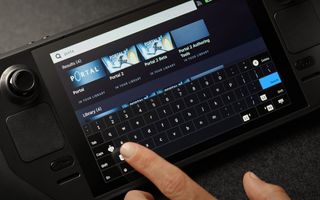
We've heard a lot about NVMe SSDs this console generation and the way they've revolutionized how, and how quickly, games can load things. We haven't heard much about eMMC drives, which are basically more compact, slower SSDs that are generally used for very specific things, namely built-in storage. In other words, the $399 Steam Deck with 64GB of eMMC storage will load things considerably more slowly than the $529 model with a 256GB NVMe SSD, but still faster than a disc drive.
All that being said, the Steam Deck models packing NVMe SSDs will likely compete with the Xbox Series X drive. The PS5 is one of the fastest machines around thanks to its custom PCIe Gen 4 drive, but while the Steam Deck won't reach those speeds, it ought to be plenty fast.
The processors in the PS5 and Xbox Series X obviously dwarf those in the Steam Deck, particularly in the GPU department (though it's much closer to the 20 compute units in the Xbox Series S), but that comes down to the size and video output differences mentioned previously. The important takeaway here is that, for its weight class so to speak, the Steam Deck is pretty impressive on paper. Despite its limitations, it can go toe-to-toe with AMD gaming laptops in its price range, as the best gaming laptops will confirm.
The Steam Deck pre-order process explained - here's how to lock in yours.

Austin has been a game journalist for 12 years, having freelanced for the likes of PC Gamer, Eurogamer, IGN, Sports Illustrated, and more while finishing his journalism degree. He's been with 12DOVE since 2019. They've yet to realize his position is a cover for his career-spanning Destiny column, and he's kept the ruse going with a lot of news and the occasional feature, all while playing as many roguelikes as possible.
Most Popular



